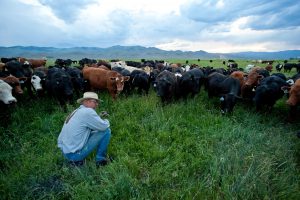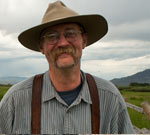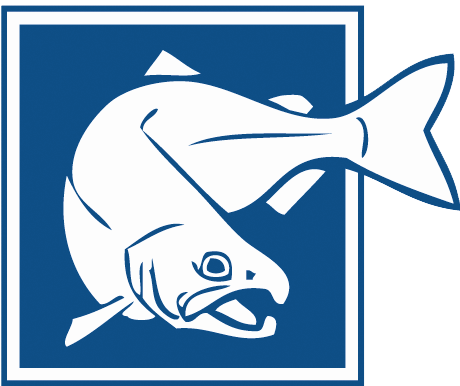 Rancher Glenn Elzinga was torn between his interest in restoration and his need for economic survival. With assistance from the USBWP’s conservation partners, he found a way to a common-sense outcome.
Rancher Glenn Elzinga was torn between his interest in restoration and his need for economic survival. With assistance from the USBWP’s conservation partners, he found a way to a common-sense outcome.
Elzinga raises grass-fed, organic beef at Alderspring Ranch on the banks of the Pahsimeroi River. Historically, this tributary of the Salmon River coiled through an abundant basin for spawning, migrating, and rearing summer chinook salmon, steelhead, and westslope cutthroat. But for more than a century, parts of the Pahsimeroi and its tributaries have run dry in late summer and early fall because of water diversions for irrigated agriculture. Elzinga wanted to help. “I knew I was committed to nature conservancy,” Elzinga said. “I felt an obligation to make the systems right—functional, efficient, economical and sustainable.”
He and his neighbors met with the Idaho Water Resource Board, the Custer Soil and Water Conservation District, the Department of Fish and Game and the Natural Resource Conservation Service—all partners in the Upper Salmon Basin Watershed Program.

“It’s been a great thing for us, a great thing for everyone. There was a rightness to the deal.”
Morgan Case, a biologist with the Idaho Water Resource Board, guided the landowners through a range of options. “They knew we wanted to be sure changes they made in their irrigation management would make financial sense and would deliver results for fish,” she said. Together, the ranchers agreed to remove a set of irrigation ditches that drained a creek with prime chinook habitat and intercepted two springs that would otherwise feed cold water to the Pahsimeroi; one ditch acted as an upstream fish migration barrier during low-water periods.
With funding support from another USBWP partner, the Columbia Basin Water Transactions Program, the Idaho Water Resource Board negotiated agreements with the landowners to change their point of diversion to a stretch of the mainstem Pahsimeroi where flow is not limited. As part of the project, the landowners also switched from flood irrigation to sprinkler systems. The project restores nearly 30 cubic feet per second (cfs)—or more than 13,000 gallons per minute—of clean, cold water.
“It was petrification to sign it,” Elzinga said. “That was a difficult thing to do.” But Elzinga’s predictions had been right. The new system boosted productivity at all four ranches. The sprinklers are precise and less labor-intensive than the old ditch system.
Biologists with the Department of Fish and Game report that adult salmon are returning to the river in greater numbers than before. “It’s been a great thing for us, a great thing for everyone,” Elzinga said. “There was a rightness to the deal.”
 Official Government Website
Official Government Website
